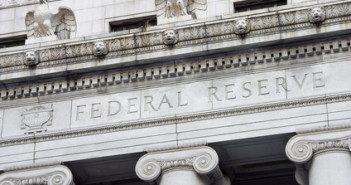US economic indicators have disappointed too many times in recent months. Growth may have stalled altogether. Will this push the Fed to action?
Despite the worsening picture, the chances of an announcement of QE3 in the June 20th meeting is still low. Why?
- Growth: there is no evidence that the economy stopped growing or began contracting. This might happen in the future, but while there’s there still growth, the Fed isn’t likely to expand the balance sheet even further.
- Housing: Apart from jobs, also the housing market is on the Fed’s mind. Yet, also here, the situation isn’t bad enough for an intervention via buying Mortgage Based Assets.
- Inflation: The goal of QE2 was to prevent deflation – a situation where prices are falling, consumers are reluctant to buy, prices continue falling, etc. Even with the drop in gasoline prices, headline inflation is still above 2% and so is core inflation which the Fed cares about much more.
- Low yields: The goal of QE1 and also QE2 was to lower long term interest rates in order to encourage lending. With the current crisis, yields on long term bonds are at historic lows. More bond buying will have little impact.
- Differences within the Fed: Quite a few voices within the Federal Reserve object QE3 for all these reasons. Their voices are heard.
What could push the Fed to action despite all these reasons?
- Europe: the worsening situation in Europe was stated as a cause for worry in the Fed. In case of a Greek exit or even a Spanish bailout, the Fed might act, even alone, to provide more liquidity. A bigger European blow up is needed for Fed action, and the Fed will likely act in coordination with other central banks.
- Image: The Fed might want to be seen as “doing something” – to show it is active and ready to do even more, even if its actions haven’t little impact.
There was a lot of political pressure against the Federal Reserve’s QE programs, and the closer we get to elections in November, the lower the chances for QE3. However, a significant deterioration in Europe will certainly remove such political barriers, so the Fed might still act closer to the elections.
“Operation Twist”, announced back in September, is ending soon. The program’s goal was to twist the yield curve, lowering long term interest rates without changing the size of the balance sheet – without printing more dollars.
What can the Fed do?
- Nothing: There is a good chance that no new policy decisions will be announced in June. QE3 or more twist will have little impact in the current situation, and the Fed can pass the ball to the politicians’ court, especially as the “fiscal cliff” is getting closer. In this case, the dollar will strengthen across the board. Doing nothing at this meeting still leaves the door open for coordinated action or QE3 in the next meeting.
- More Twist: The Fed could renew the program, stating it was a success, even if the fear in the markets had a much stronger impact than the Fed’s operations, at least in recent weeks. Such a move will significantly lower the chances for QE3 in the near future, and will boost the dollar even more than no action at all.
- QE3: Chances are low for all the reasons stated above. In this case, the dollar will fall.
- Coordinated Liquidity Boost: The Fed decision comes as G-20 leaders meet in Mexico. An announcement for coordinated action could come at this point. In this case, the dollar will plunge. See the details below. The chances are low.
This article is part of the Forex Monthly Outlook. You can download it by joining the newsletter in the form below, which appears on any article on Forex Crunch.
More: FOMC preview by FXStreet experts
